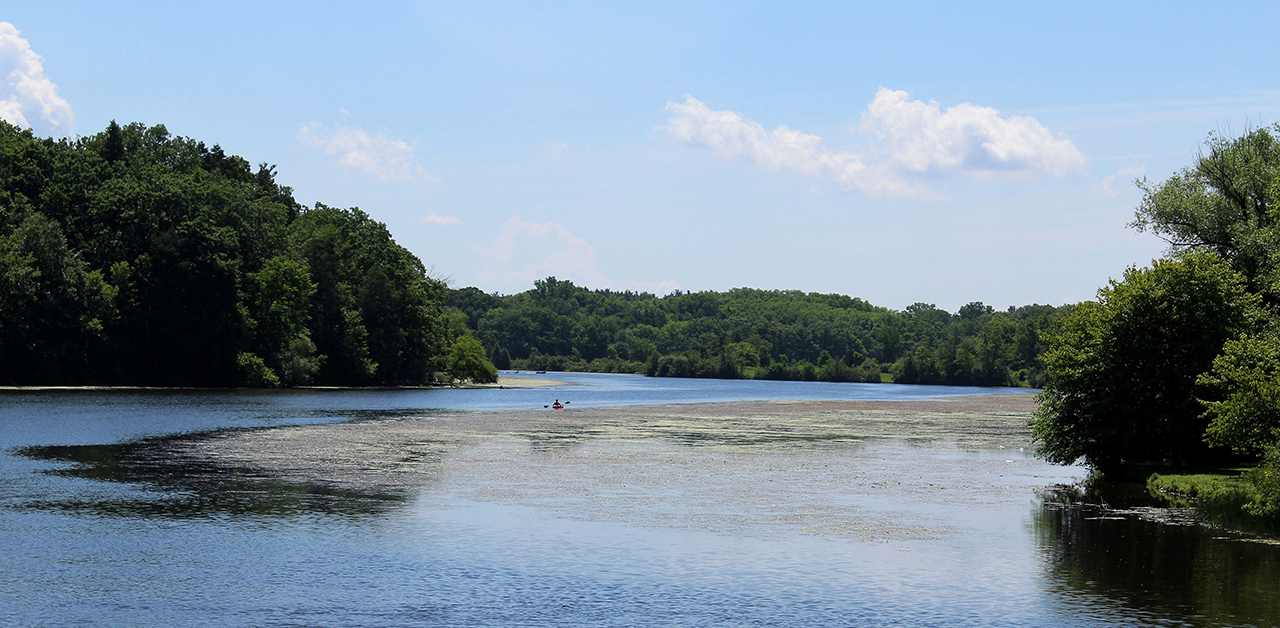New study shows all fish tested from Huron and Rouge Rivers have PFAS
PFAS are dangerous for watersheds and wildlife because they are non-biodegradable.

A view of the Huron River from Gallup Park in Ann Arbor.
A study conducted by the Ecology Center, Friends of the Rouge, Huron River Watershed and six local anglers recently found PFAS, or per- and polyfluoroalkyl substances, in every fish caught and tested.
PFAS are a cancer-causing class of toxic chemicals. They are used to make water- and stain-resistant products and are found in things like cleaning products, fabric and fire-fighting foam. PFAS are dangerous for watersheds and wildlife because they are non-biodegradable.
Erica Bloom is the Toxic Campaign Director of the Ecology Center. She says that while PFAS are a global problem, the study wanted to focus on Southeast Michigan.
“We collected about 100 fish from 15 sites along the Huron and Rouge, and we tested about 60 of those. We found PFAS in every fish,” says Bloom.
Related: Federal regulators prioritize cleaning sites contaminated by ‘forever chemicals’
While all 60 of the fish had PFAS, the state health department has not issued a “do not eat” order. The chemical amount does not exceed the limit of 300 parts per billion. However, the state has advised limiting fish consumption to two meals a month. But for some, this isn’t the case.
Tenitia Purple Rudolph is a local angler who eats what she catches. Despite the chemicals found in the fish, she says her habits haven’t changed in any way.
“Well, it’s not going to stop me from fishing because I fish in all waters. You’re going to either continue to get it or continue to buy it. Me, I prefer to get it myself. That way, I know it’s properly done right,” says Rudolph.
People who still plan to consume fish from the Rouge and Huron River should follow state health guidelines from their Eat Safe Fish Guide. These tips include catching smaller fish, avoiding large predator fish, removing fat and eating fish that have been broiled or grilled.
Bloom says the study was made possible by partnering with local anglers like Rudolph.
“These folks that we partnered with really helped us design the study. They helped us decide where we wanted to collect and which species would make sense for what people eat,” says Bloom. “I think it’s so important when you’re doing community-based science that you’re working with people most impacted by the contamination.”
The community-based study recommends Michigan lawmakers establish a science-based PFAS maximum contamination levels for fish and wildlife, hold polluters financially responsible and prohibit the sale of all PFAS-containing products unless no safer alternative exists.
Trusted, accurate, up-to-date.
WDET strives to make our journalism accessible to everyone. As a public media institution, we maintain our journalistic integrity through independent support from readers like you. If you value WDET as your source of news, music and conversation, please make a gift today.

